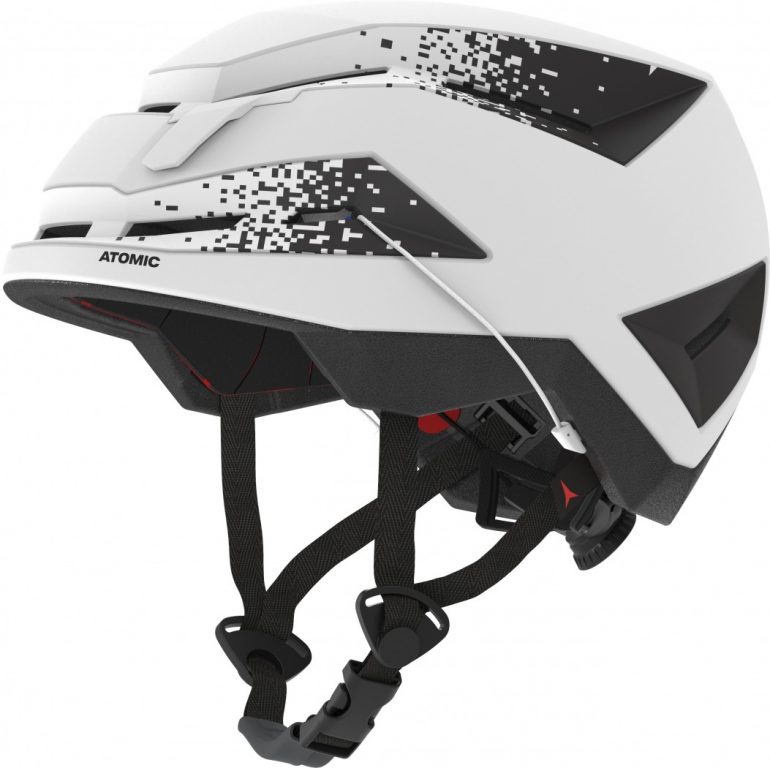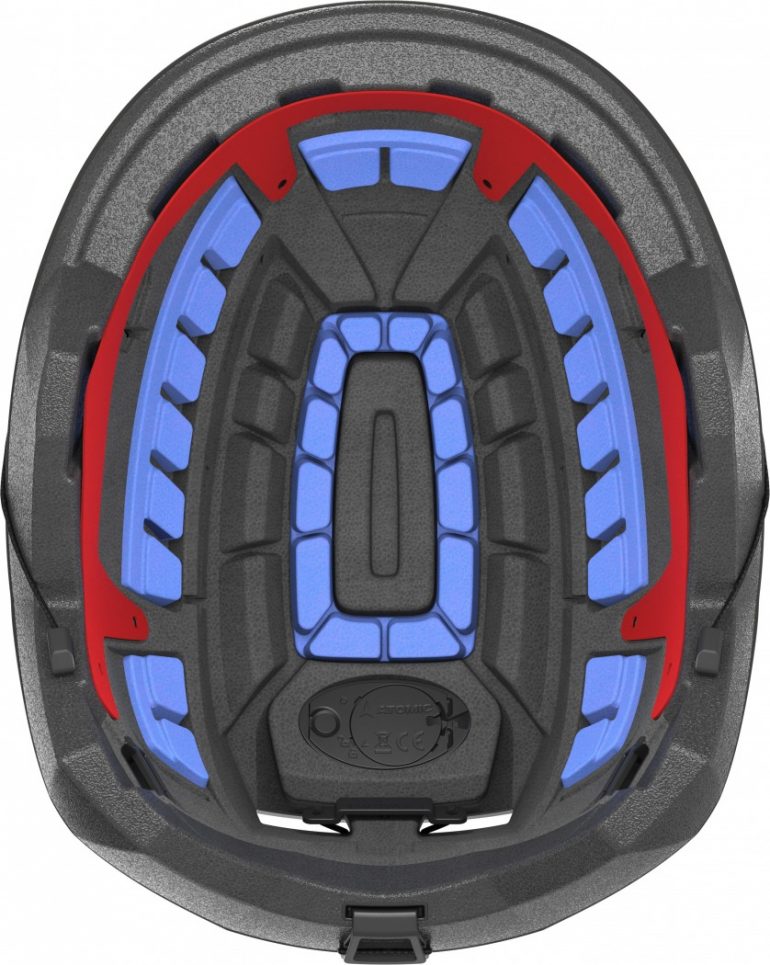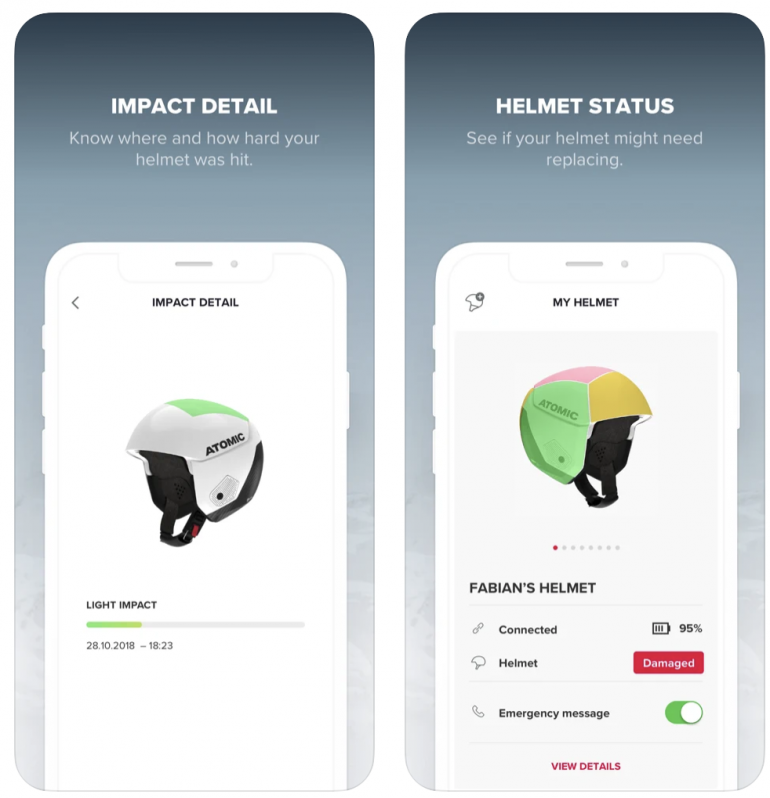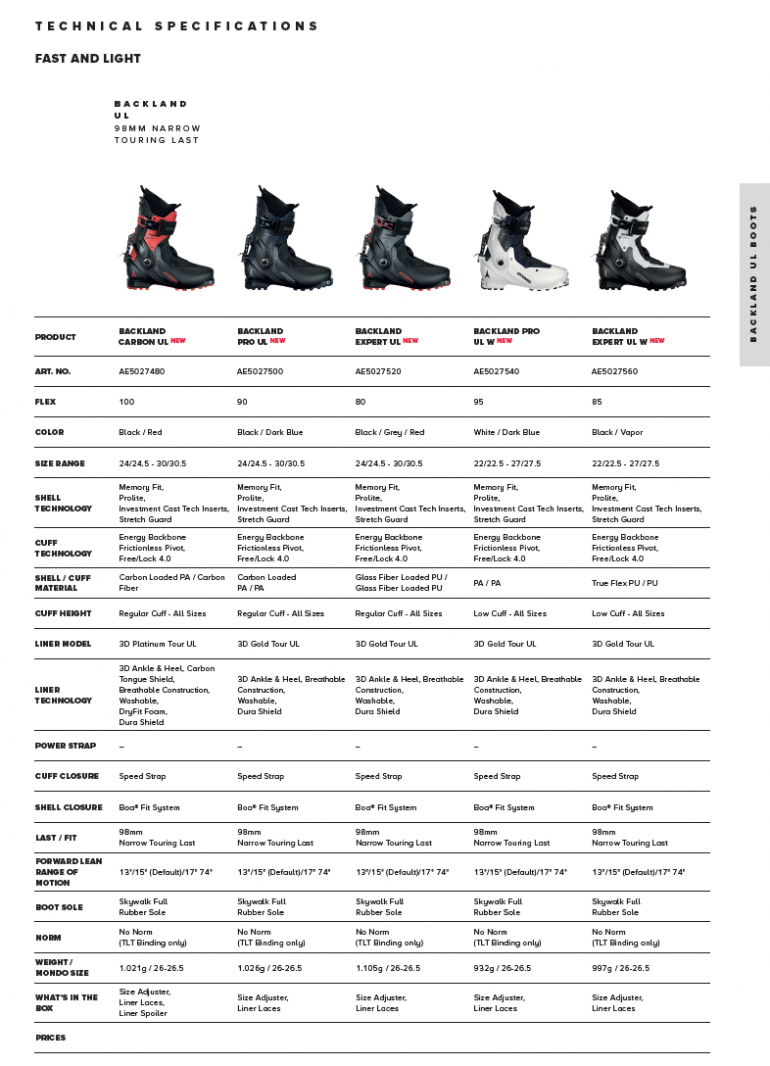
The Backland UL CTD Helmet is a multi-certified brain protector with some integrated sensor technology.
Atomic, a division of the goliath Amer Sports, has some resources to play when it comes to R & D. Kudos to them for investing in tech is perhaps the most overlooked but mandatory safety gear: the helmet.
A few weeks ago, we posted a story on avalanche bag use. One of the comments, rightfully so, called us out for not mentioning the helmet in the timeworn safety trifecta of beacon, probe, shovel. Add a helmet to that list.
When speeds are higher or obstacles in the foreground (trees), wearing helmets on the downhill are the obvious times to wear a lid. On the up-track, often, we see helmets secured in the helmet carry: helmets can be overly hot under exertion, making them uncomfortable and even intolerable.
Safety First: Helmets
The Atomic Backland helmets are “multi-normed” meaning they are certified for skiing (EN1077:2007) ASTM F2040, climbing (EN 12492:2021), and … cycling (EN 1078:2012, CPSC 1203). For those eye-rolling the cycling cert, Atomic has a point. Many skiers are approaching spring lines via bike, frequently in the dark. A cycling certified helmet does add a margin of safety for those of us, this writer included, who don a lightweight climbing helmet under those circumstances. And, there are burlier cats out there like @cascadeconnections, who cycle all winter long here in the PNW chasing snow. I know he wears a helmet, but honestly, it’s usually dark outside when I see him approaching or returning, so I have no clue what his lid go-to is.
The Atomic Backland helmet may be suitable for those looking to save money and buy a single helmet for their adventures.
The helmet line comes in three models; the Backland (the all-arounder), the Backland UL CTD featuring Shocksense system/SOS, and the Backland UL (gram-counters). Features include Atomic’s version of MIPS called the AMID system, a removable and washable ski liner, a similar but less insulating “skimo” liner (also washable), clamps to secure a headlamp, and minimalist and detachable straps for those affixing goggles. The fit adjusts with a headband and includes an up and down adjustment to tilt the helmet on your head.

The helmet innards.
Lastly, Atomic adds a little bit of high-tech to the UL CTD helmet. This helmet features an integrated “Shocksense” sensor (run by a small battery) and connects to a proprietary app that can track and detect impacts and the severity of those impacts. Lastly, an SOS alert function is part of the sensor system. Atomic says if an impact exceeds a certain threshold, the app automatically sends an SOS alert, including GPS coordinates, to specific contacts.
According to Atomic, the emergency SOS feature is activated in the app and can be toggled on and off. The app must also be on to record impacts and send out the SOS.

Specs:
Backland – $310, 350g
Backland CTD – $410, 370g
Backland UL – $260, 340g
Backland UL CTD – $360, 360g.
You can find the product safety guidelines for the Shocksense feature here.
Atomic Boots

The 2022-2023 Atomic Backland Carbon.
Helmets, as noted, are essential, but you likely clicked here for the boots.
The boot line splits into the Backland UL series, for the light and fast among us, and the straight-up Backland for the more downhill oriented skier. (Just a reminder, we have only set eyes on these boots through videos and images.)
The Backland’s chassis is unchanged, and it remains a 98mm last, with 74 degrees ROM, with a refined locking mechanism in the rear. The lower closure is an iteration of a Z-cable system called “Cross Lace 2.0.” (No more BOA for the Backlands). The Backland Carbon also gets a reboot on the liner; according to Atomic, the liner is constructed with a more durable and better fitting (out of the box) foam than earlier models. This liner includes a thicker tongue and plastic around the outer-upper cuff for rigidity. Atomic uses a new gaiter/seal called Stretch Guard, which, they claim, makes it easier to enter and exit the boot.
Here’s a convenient chart to compare specs between the Backland boot series.

Here’s a WildSnow review of the 2020 Backland Carbon.
Backland UL Series
The Backland UL line uses a BOA closure for the lower and a Stretch Guard weatherproof sealer, similar to the Backland series. The lasts are also 98mm.

The 2022-2023 Atomic Backland Carbon UL.
The new Backland Carbon UL liner shares a similar lower to the Backland liner with more flexibility in the cuff area. The cuffs make the 74-degree range of motion more likely to be achieved. The cuffs close with what Atomic calls a speed strap – a combo of a traditional upper buckle and a power strap.
Here’s a comparison chart for the UL series.

While most of the WildSnow backcountry skiing blog posts are best attributed to a single author, some work well as done by the group.
